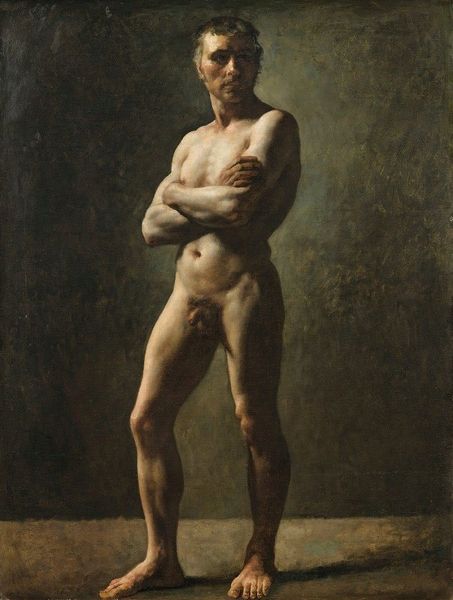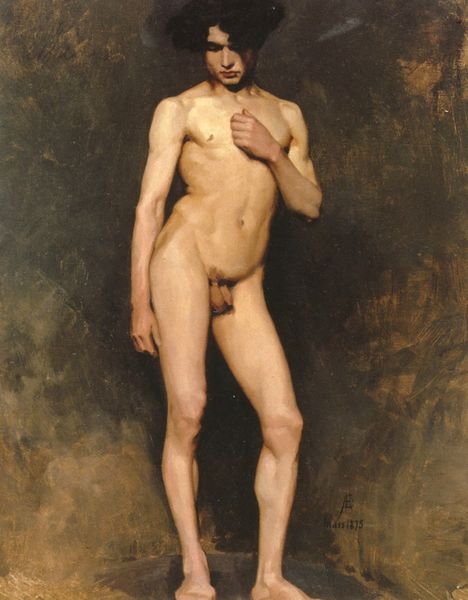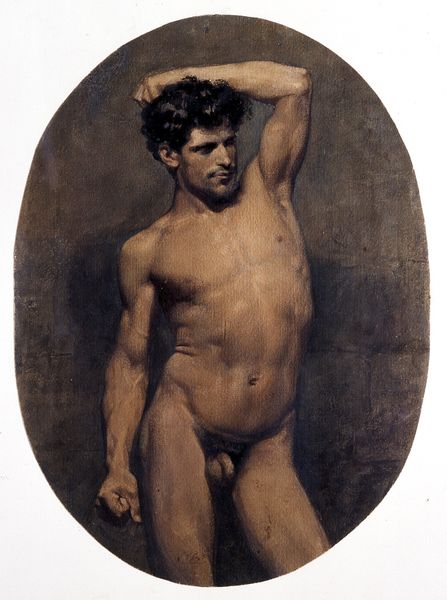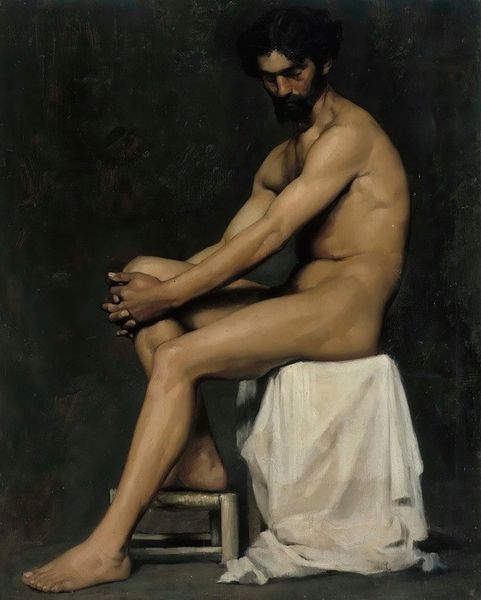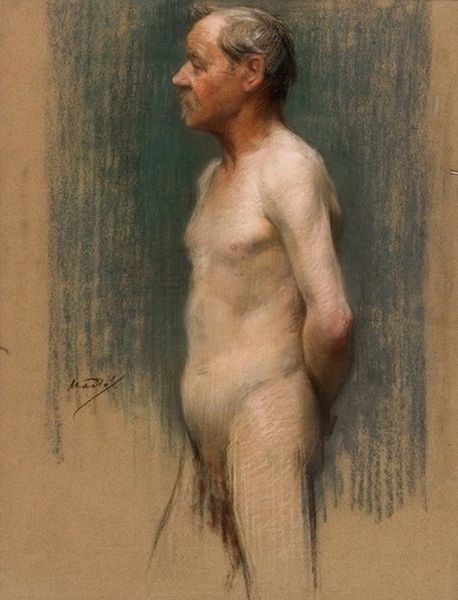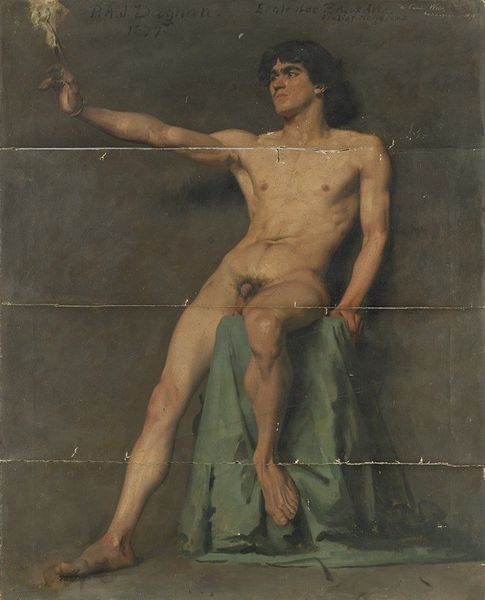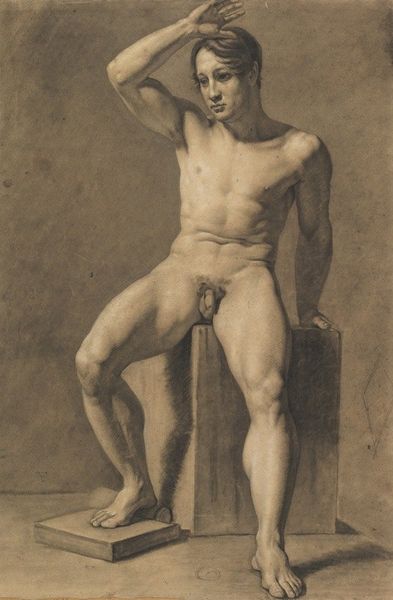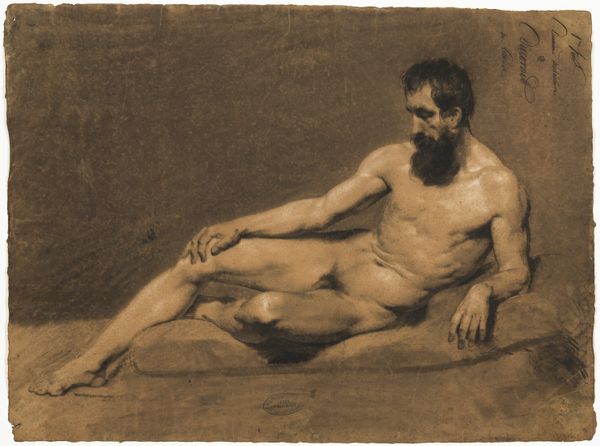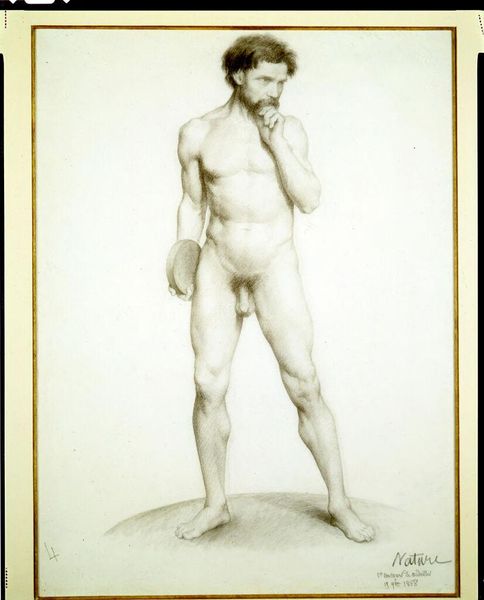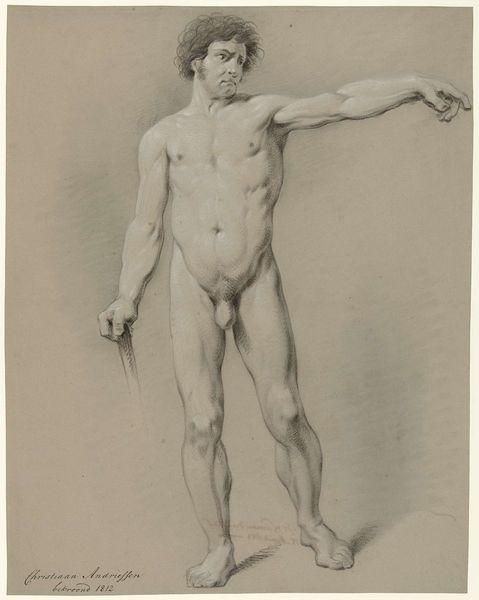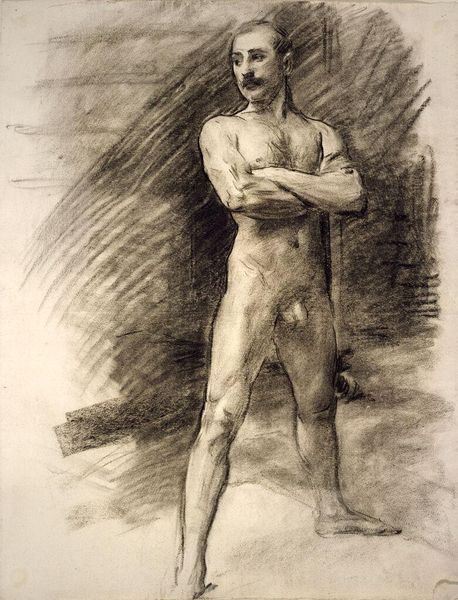
oil-paint
#
portrait
#
figurative
#
impressionism
#
oil-paint
#
charcoal drawing
#
oil painting
#
portrait drawing
#
academic-art
#
nude
Copyright: Public Domain: Artvee
Editor: We're looking at "Male Model, Study" by Albert Edelfelt, created between 1874 and 1875. It's an oil painting, and I'm immediately struck by the subject's intense gaze and the contrast between the light skin and dark background. What stands out to you? Curator: The figure, for me, is less about individual portraiture and more a symbol. What kind of figure, then, does he call to your mind, especially given his muscular build and the almost classical contrapposto pose? Editor: Hmm, maybe an athlete, or even a gladiator from ancient Rome? Curator: Precisely! There is a clear intent to connect the present to the past, to evoke a certain idea of masculinity, and indeed, to connect artistic production to an idea of bodily perfection, of power. The lack of direct eye contact, his averted gaze, enhances this impression by giving him a universal quality beyond time or culture. What emotion does that pose evoke in you? Editor: Now that you mention it, it does seem a bit detached, not vulnerable but perhaps… defiant? Like he knows his strength. But why the need to harken back to classical ideals? Curator: The late 19th century was still steeped in the values of academic art. Think of the rise of nation states. Drawing on classical ideals, artists sought to imbue contemporary society with a sense of historical weight and continuity. By referencing classical antiquity, artists legitimized and strengthened ideas about nationhood, virtue, and power. Editor: That's fascinating. I hadn't considered the political dimensions intertwined with what looks like a simple nude study. Seeing how the artist used those classical symbols, like the figure’s pose and muscularity, offers a completely new perspective on its deeper meaning. Curator: Yes, the “simple” is always culturally encoded. And symbols gain their strength from accumulated use, creating ever-deeper layers of cultural memory.
Comments
No comments
Be the first to comment and join the conversation on the ultimate creative platform.
